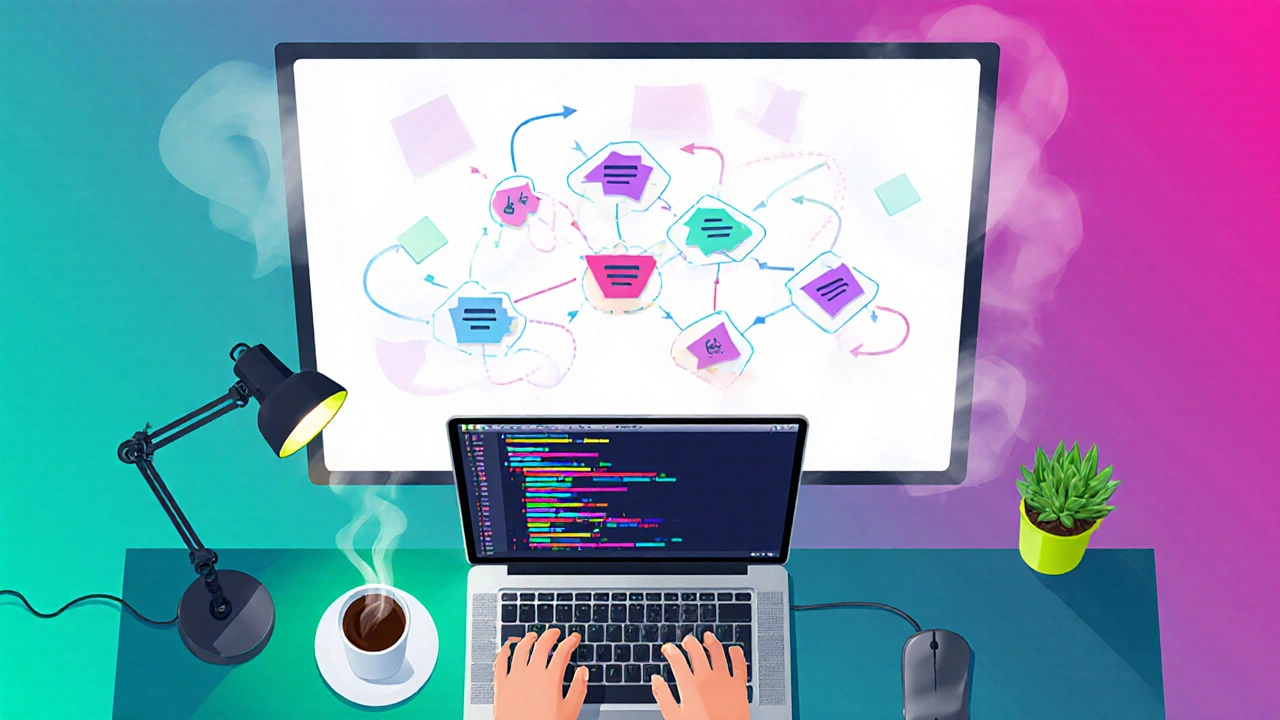How to Code Faster: A Step‑by‑Step Roadmap to Programming Success

Coding Speed Calculator
Estimate how much time you could save daily by implementing the techniques from the article "How to Code Faster".
Ever felt like you spend more time wrestling with the editor than actually solving the problem? That frustration is the common denominator for anyone who wants to code faster but keeps hitting the same roadblocks. The good news is you don’t need a magic wand-just a clear roadmap that turns good habits, smart tools, and focused workflows into measurable speed gains.
Why Speed Matters in Modern Development
Programming Faster is the practice of increasing coding throughput without sacrificing quality, helping teams deliver features, fix bugs, and iterate on ideas more quickly. In today’s sprint‑driven world, a two‑day turnaround can mean the difference between a product launch and a missed market window. Faster delivery also reduces technical debt buildup because you spend less time on stop‑gap fixes and more on sustainable solutions.
Build the Right Foundations
Speed starts on solid ground. If you’re still learning the basics of your language, any speed‑boosting technique will feel shaky. Master core syntax, data structures, and algorithmic patterns before you chase shortcuts. For example, knowing when to use a hash map versus a list can cut the number of lines you write and the time you spend debugging.
- Pick a primary language (Python, JavaScript, Go) and stick with it for at least 30 days.
- Complete a small project that forces you to use loops, conditionals, and functions.
- Write unit tests for every function; they become safety nets when you refactor later.
Adopt High‑Impact Coding Habits
Coding Habits daily practices that streamline thinking, reduce context switching, and keep momentum high are the low‑effort, high‑return moves you can start today.
- Single‑Task Focus: Work on one feature or bug at a time. Multitasking triples the mental load.
- Write Before You Type: Sketch the solution on paper or a whiteboard. A clear plan cuts trial‑and‑error loops.
- Use Meaningful Names: Variable and function names that describe intent eliminate the need for comments later.
- Practice the "10‑Minute Rule": If a problem takes longer than 10 minutes, step away, review, or ask a teammate.

Leverage Tools & Automation
Modern IDEs are packed with features that can shave minutes off every task. Below is a quick comparison of three popular productivity boosters.
| Tool | Key Feature | Time Saved per Day | Best For |
|---|---|---|---|
| IDE Shortcuts | Keyboard commands for navigation, refactor, build | ~30 minutes | All languages |
| Automation Tools | Scripts for linting, formatting, CI pipelines | ~45 minutes | Teams with CI/CD |
| Pair Programming | Two developers share a workstation, real‑time review | ~20 minutes (by reducing bugs) | Complex features |
IDE Shortcuts keyboard combinations that let you navigate, refactor, and run code without leaving the editor are the quickest win. Spend 15 minutes learning the most common shortcuts for your editor-copy/paste, find/replace, and code navigation-and you’ll instantly shave half an hour off your day.
Automation Tools scripts or services that handle repetitive tasks like linting, formatting, and deployment free your brain for problem‑solving. Set up a pre‑commit hook that runs black for Python or prettier for JavaScript, and you’ll never waste time on style debates again.
Structure Workflows for Flow
Even with perfect habits, chaotic schedules kill momentum. Adopt a time‑boxing technique that respects your natural attention span. The Pomodoro Technique-25 minutes of focused work followed by a 5‑minute break-fits most developers, but you can tweak it.
Pomodoro Technique a time‑management method that breaks work into intervals separated by short breaks helps maintain deep focus and reduces mental fatigue. Pair it with a daily “sprint planning” where you list the top three tasks you’ll complete before lunch. This creates a clear endpoint and a psychological win.
For tasks that need longer concentration-like algorithm design-try the Flowtime method: work until you naturally feel the urge for a break, then note the exact duration. Over weeks you’ll discover your optimal work window and can schedule high‑cognitive tasks accordingly.

Continuous Learning Loop
Speed isn’t static; it’s a habit that improves with feedback. After each feature, spend five minutes reviewing what slowed you down. Was it a missing library? An unclear API? Record the insight in a personal “speed log” and revisit it weekly.
Learning Algorithmic Thinking the ability to break problems into reusable, efficient steps before coding also accelerates work. Practice with coding challenges on platforms like LeetCode or HackerRank-pick one medium‑difficulty problem per week and solve it without an IDE first. The mental exercise forces you to outline the solution, which translates to quicker implementation later.
Don’t forget Test‑Driven Development a workflow where you write failing tests before writing functional code. While it feels slower at the start, it slashes debugging time dramatically, especially in larger codebases.
Checklist for Faster Coding
- Master core language concepts (30 days).
- Learn top 15 IDE shortcuts.
- Set up automation (lint, format, CI).
- Use a time‑boxing method (Pomodoro/Flowtime).
- Apply the 10‑Minute Rule for stubborn bugs.
- Pair program on at least one complex feature per sprint.
- Write a short speed‑log after each task.
- Do one algorithmic challenge per week.
- Adopt Test‑Driven Development for new modules.
Frequently Asked Questions
How long does it take to see noticeable speed gains?
Most developers notice a 15‑20% reduction in coding time after two weeks of consistent habit tracking and shortcut practice. Bigger gains appear once automation is fully integrated, typically within a month.
Should I focus on shortcuts or on learning new frameworks?
Start with shortcuts. They improve every line you write, regardless of framework. Once you’ve saved time on the basics, invest in a framework that solves a specific problem in your domain.
Is pair programming worth the extra person‑hour?
For complex, high‑impact features, the reduction in bugs and rework usually outweighs the added hour. For routine tasks, solo work with a good code review process is sufficient.
Can I use the Pomodoro Technique for debugging?
Yes. Set a timer, isolate the bug, and work nonstop until the alarm. The break forces you to step back, often revealing the issue when you return.
What’s the best way to start automating my workflow?
Begin with a pre‑commit hook that runs a formatter and linter. Expand to unit test execution and finally to a full CI pipeline that runs on every push.